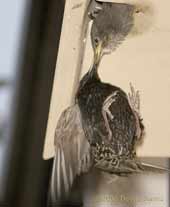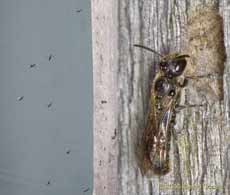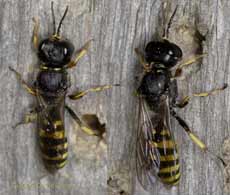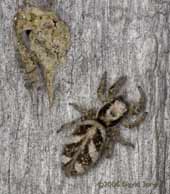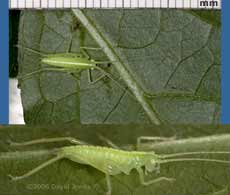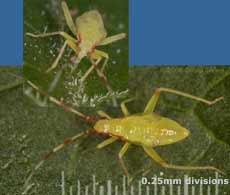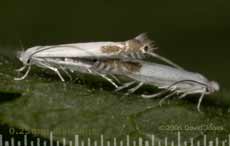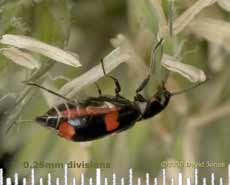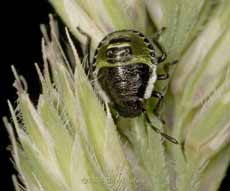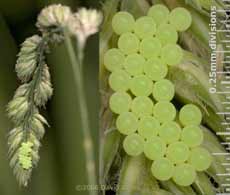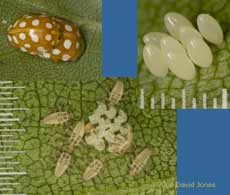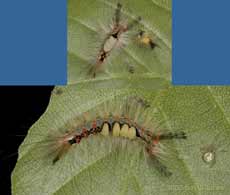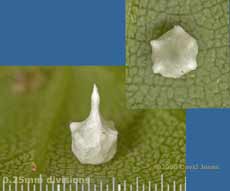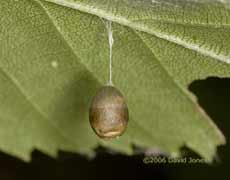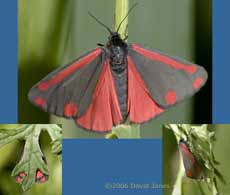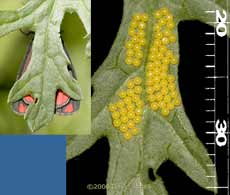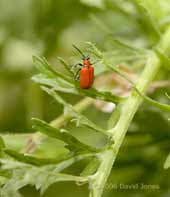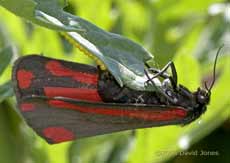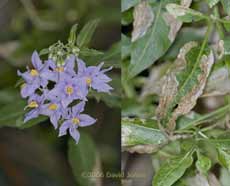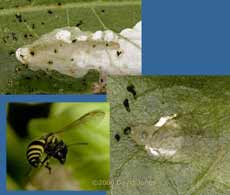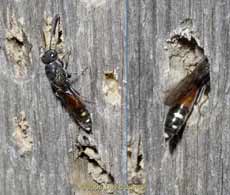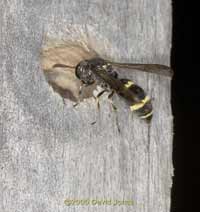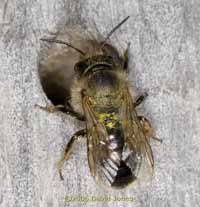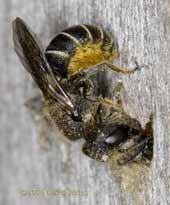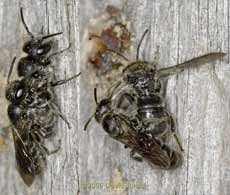Go to the last entry on this page .....Go to previous entry14 June - We are back, or rather, we came home two days ago and I am still recovering! It's amazing how an enjoyable, and mostly restful holiday can leave you shattered! I'll be adding a brief holiday entry over the next few days, although I didn't take as many photographs as I had intended, and many of those that I did take were not as good as they should have been. When we returned on Monday the weather was hot, with the temperature close to 30C and humid, but by the evening it had turned cloudy and a lot cooler. Yesterday was a grey day, with a little rain in the afternoon and a high of around 24C. This morning is dry but overcast, with the temperature dropping during the morning - at 11am it is around 15C. After all the rain we had before our holiday I didn't take enough precautions with a couple of our potted plants and as a result I fear that the Oak tree that was flourishing may have succumbed to the hot conditions during our absence. I'm keeping my fingers crossed for it but I'm not optimistic. However, a black stemmed bamboo plant that I thought had died as a result of dry weather earlier in the Spring, started sprouting green shoots while we were away! Elsewhere in the garden, plants have flourished in the hot weather following all the rain that had fallen. Yesterday I used the mower to help clear the main pathway and the small area around the birdbath and feeders (which were all empty!). Over the next week I want to tackle the new growth on the Hawthorn and Willow, although I will need to do the job in 'bits' so it may take longer. I need to continue trimming the Ivy tree as well, but that will have to wait until the Blackbirds have finished their nesting - I disturbed the female unintentionally when I inspected the Birch yesterday. It was a relief to see that this most recent nest, started before we went to Cornwall, is still in use. On the bird box front, The Robin box continues to remain empty. The Sparrows are still going in and out of their boxes at the side of the house, but I haven't seen any activity around the boxes on the back (west facing) wall this year. I have seen Starlings continuing to go in and out of the Swift boxes. This morning I found a dead Starling chick (dead for a couple of days by the look of it) on the ground below the boxes. It was well developed, and must have been close to fledging. On Monday afternoon there was a great deal of Swift activity in the driveway that we share with our neighbour so I'm guessing they may be nesting in next-door's loft, as happened last year. I haven't been watching since then so I will need to confirm that. The House Martins continue to go in and out of the right-hand nest, although I have yet to see any sign that they are feeding chicks as yet, and the camera box remains un-used so far. I may get the webcam running again later today. The problem with the laptop hasn't re-occurred. I can only assume that something must have been sucked in by the cooling fan to produce the loud noise, but it's now running quietly again. Having refilled the feeders, I've seen Blue Tit fledgling being fed this morning, and I caught a glimpse of what I think is a Goldfinch fledgling at the Sunflower feeder. The adults have been back several times since then but I'm still waiting for the youngster to return. In Monday's sunshine there was a small swarm of tiny solitary bees active at the bee hotels, as well as one solitary wasp, but they have all become inactive as the temperature has dropped. On the Birch tree the Orange Ladybirds are now active. I saw one pair mating, and have found a group of eggs on the underside of a leaf. There are also a couple of other egg cases, and a colourful caterpillar to report on when I get around to sorting out photographs for this entry.
16 June - Another try to get the diary back into action! Since we've been home I've been struggling a bit with the CFS. I have done a bit of the pruning that is needed, but there have been a lot of long breaks, and not just because of the football that is on at the moment, although that has been a suitable excuse to stop doing things! In my last report I mentioned a dead Starling chick. The next day a second one appeared in the same spot, under the Swift boxes. Like the first one it was fully feathered, and hadn't just died. I have spent quite a bit of time watching the boxes to try to establish the status of the Starlings nests.
In this picture, you must remember that the entrance is on the bottom of the box, so the parent has to fly up vertically to pass food to the chick, with no chance of hanging on anywhere while its offspring reaches so far out of the box!
While I watched the Starlings there were periods of intense activity by the Swifts between the two houses. Just like last year, one pair is nesting in my neighbour's roof, although it seems that the Sparrows are also going in and out of the same opening. At least once I saw a Starling adult being startled by the Swifts who flew very close to the Swift boxes several times. I wonder if they have had something to do with the dead Starlings! The youngster being fed in the picture looks as though it could fledge very soon. If it goes in the next few days I'm wondering whether it would be worth clearing out the nest quickly, just in case the Swifts may still be interested. I haven't seen the young Goldfinch since the beginning of the week. While I haven't seen a Wren either, we hear one singing very close to us every day. I've never heard it over such a long period of time before. It must be nesting nearby. I'd love to know where - while in Cornwall, Pat, the owner of the site we stay at, took me to see a nest he had just found in the middle of his large workshop. It was a ball of moss with a perfectly round entrance, and had been built about 4ft off the ground amongst a group of planks and old curtains that were propped again a roof support. It was the first time I have seen such a perfect nest. There were no eggs in it and Pat hadn't seen any signs that a bird was even building it. I will be putting a picture into the diary when I finally get round to putting the holiday page together. The male Blackbird has quite a competitor in the Wren, but he continues to sing loudly each day, although at the moment he seems to prefer to used chimney pots and TV antennae as his perch. Perhaps the trees are too close to his partner in her nest. I only see her when she make occasional excursions out to feed.
In my previous entry I didn't mention that one of the first things that I noticed on our return was the activity around the main bee hotel. When the sun shines there is almost a swarm of the very small solitary bees that use the small, 3mm (and some 2mm) diameter holes.
In addition to those bees, there was also a single solitary wasp that I will need to identify again. This was going in and out of a 3mm hole.
As well as ants that are always about, there was also this fully grown hunting spider (a female Salticus scenicus), seen here next to a sealed 3mm hole.
One of the first pruning jobs I decided to undertake was to trim some branches of the Elder which were reaching high up into the Hawthorn. As is usually the case, jobs like this quickly become more complex. This time, progress was slowed when the first branch removed had this cricket on a leaf, and I found several more as I trimmed more branches.
Far outnumbering the crickets were these nymphs. The upper image shows one using the long, piercing mouth of a bug. They were very energetic little creatures, moving very quickly to the other side of the leaf as soon as there was any movement near them.
This pair of micromoths were mating on another Elder leaf. Tim Norriss and Ian Thirlwell have identified these as Apple Leaf Miners (Lyonetia clerkella), a common micro moth in Hampshire. It's larvae feed on various fruit trees (several neighbours have apple trees).
At the far end of the big pond I deliberately allow a small area of coarse grass to grow and flower. At the moment its flower heads extend up over 4ft and usually yield some interesting insects. The last few days have been promising and have included this small beetle which was difficult to photograph as it was very sensitive to every movement that I made.
As usual there are larvae on it, including several nymphs like this one, which I believe is the young of one of the shield bugs. I also saw, but didn't photograph the larva of a hoverfly. That was hunting for aphids, something I have seen these larvae feed on in the past.
Finally, the bright, lime-green colouring of these eggs caught my eye. I shall be keeping watch on them to see what emerges.
Today, I found that those eggs had hatched and there were tiny larvae around them. On another leaf there was a new group of eggs.
There are also a couple of these colourful caterpillars on the birch leaves. I remember seeing them last year - I shall have to look back in the diaries to see if I identified them at that time. Tim has confirmed that it is a Vapourer Moth (Orgyia antiqua).
There are two interesting objects to be seen on the Birch at the moment. I'm not sure if they are egg cases or pupal cases. The first is this small white, pointy structure that seems to have thin silk lines to lash it into place on the underside of a leaf - I have turned the picture over here.
Hanging from another leaf is this spherical case, measuring about 3 x 4.5mm.
The Ragwort plants are well developed now, although it will be a while before their flowers are ready to open. However, they attracted a new visitor to the garden today.
A quick check of the insect guide confirmed it as a Cinnabar moth, a species we have not see here previously. After a while it finally headed for a leaf on one of the Ragworts and settled there.
It stayed in the same spot for the next 6 hours, and once it started flying again I took the opportunity to check the back of the leaf, where I found 78 yellow eggs. During that 6 hour period it had laid the eggs at an average of one every 4 to 5 minutes. The Ragwort is the exclusive food plant for the larvae of the Cinnabar Moth, and we can look forward to the appearance of the yellow and black stripes of the caterpillars over the weeks to come.
A bit of a late-comer, this Lily Beetle also appeared on the Ragwort. These beetles usually appear as the Snake's head Fritillaries are growing and coming into flower. But those plants have long finished flowering now. In fact, their seed heads are wide open and scattering their seeds this week.
Hopefully I will get a bit more catching-up done over the weekend (and a few links need updating), but at least that's a start!
17 June - A very warm, sunny day with the temperature over 27C in the afternoon.
The Cinnabar Moth was still here this morning, and by lunchtime it was laying another group of eggs. Tonight it is still on the Ragwort.
I spent much of the morning in the driveway, helping one of my sons with a job on his Land Rover. During that time there was absolutely no activity at the Swift boxes. It was obvious that the youngster photographed yesterday must have fledged, so once the drive was clear again I made the decision to check the boxes. The upper box had a nest which was dry and empty, and it looks as though that family had been successful. However, the lower nest was quite a mess, with another dead chick next to the entrance. Like the others found this week it had been dead for at least a couple of days, so it appears that the one youngster seen yesterday seems to have been lucky to survive. Suitably equipped with gloves and a face mask I cleaned out both nests. Tomorrow, I will disinfect at least the lower box just in case the family was affected by some disease. This evening I did a bit more pruning, this time of the Chilean potato vine that covers the fence at the end of the garden (down the West Wing). Once again, there were crickets, similar to those I photographed on the Elder yesterday. I also spotted one on the Birch earlier in the day. Thanks to Tim Norriss I have added a couple of identifications to yesterday's entry.
18 June - A mainly cloudy, slightly cooler day with a refreshing breeze. The Cinnabar moth laid some more eggs again this morning, but it disappeared during the afternoon.
Yesterday I mentioned trimming the Chilean Potato Vine. The plant produces pretty flowers, but its leaves seem particularly attractive to leaf mining larvae. This results in many leaves having dead areas.
These are produced by a larva that lives inside the leaf, eating the tissues but leaving the external surfaces almost intact (top image). However, the larva creates a small opening on the underside of the leaf so that it can expel its faeces (lower-right image). This morning I spotted the solitary wasp in the lower-left image as it hunted these larvae, and I watched as it extracted one from a leaf and carried it off to its burrow. Unfortunately this was the best image I could get of the wasp. There was also an ichneumon fly that seemed to be hunting for the same larvae.
This first one, seen here, was visiting the 3mm (and larger) holes. Its slender abdomen has red segments at the front, and white spots on the rear, black portion. I suspect that it could be a female Sapyga quinquepunctatum, the larvae of which are parasitic on Mason Bees. I photographed the male, without the red band, in May last year.
Seen here at one of the 7mm holes, this one made only occasional visits to the hotel, but spent quite a bit of time searching out holes elsewhere along the framework of the caravan shelter. I photographed a similar wasp here in 2004, and I think it may be Symmorphus bifasciatus, a mason wasp.
The bees were very busy throughout the day. As well as the very small ones, at the other end of the scale the 7mm holes are now being visited.
The medium sized holes are in use, with this 3mm hole already being sealed.
Mating is usually too quick an event to photograph, but this pair remained together long enough for me to take several photographs.
Finally, the bee hotel had its first visit of the year from a parasitic ichneumon fly with a very long ovipositor, probably Gasteruption jaculator. I didn't have my camera for that visit but I hope to get photographs in the days to come. The species was here at this time last year and a hole that I saw one lay an egg into is still sealed. Perhaps I may be lucky and see an adult emerge this week. Click on the images to see larger versions - |
|
